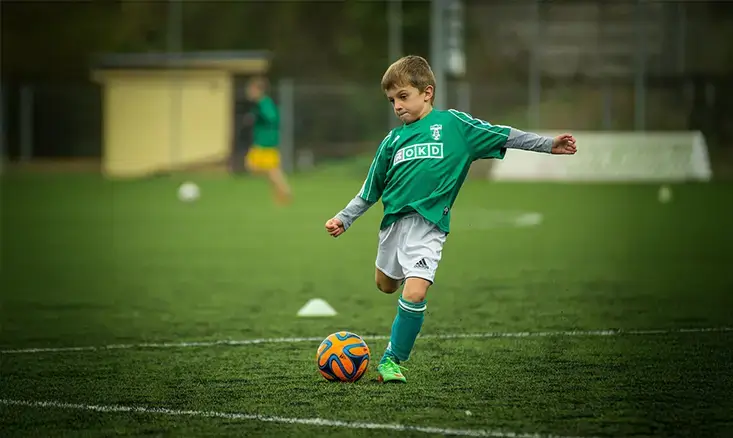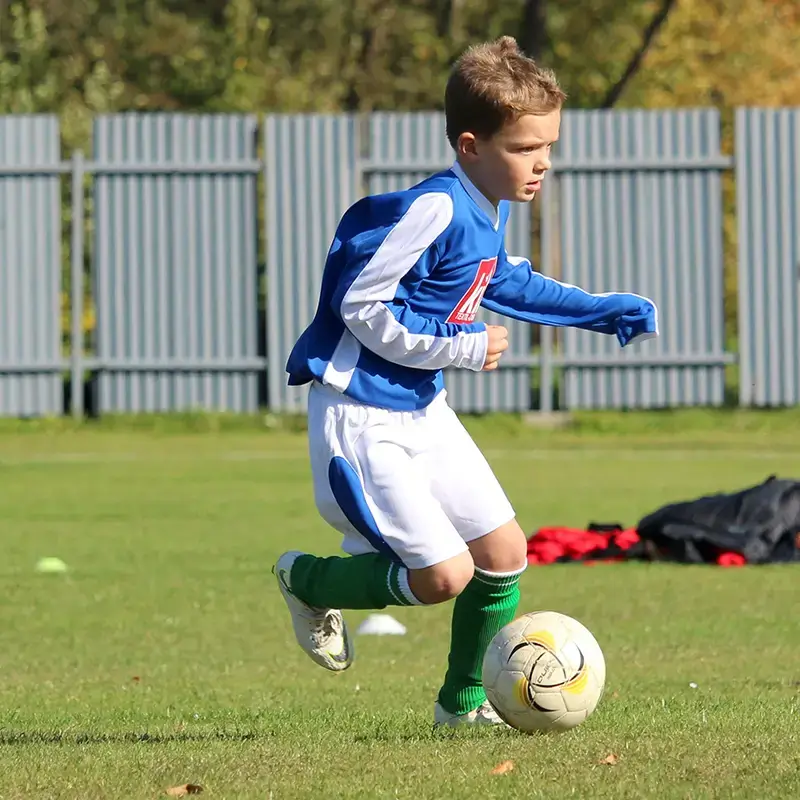CRFC BLOGS
LATEST BLOGS & NEWSLETTERS
Youth Soccer Knockout Rules: Comprehensive Tournament Guide
What Are Youth Soccer Knockout Rules?
Youth soccer knockout rules refer to a tournament format where matches follow a single-elimination system. This means each game is crucial; a win advances the team to the next round, while a loss results in elimination from the competition. This format is common in larger tournaments, including local club championships and state-level youth competitions.
To help players prepare for this type of competition, coaches often use knockout youth soccer drills during practice sessions. These drills simulate high-pressure scenarios, teaching players to make quick decisions and handle stress.
Applicability and Benefits of Youth Soccer Knockout Tournament Rules
Building Resilience and Competitive Spirit
One of the most significant advantages of youth soccer knockout rules is how they develop resilience. Learning to manage the pressure of elimination is a valuable life skill. Young players learn to cope with tension and develop the ability to perform under stress. The “win or go home” nature of knockout tournaments pushes players to give their best, teaching them the importance of preparation, focus, and perseverance.
Simulating Real-World Competition
Youth soccer knockout tournament rules are not just about winning or losing; they’re about preparation for future challenges. Playing in a high-stakes environment teaches young players strategic thinking, quick adaptation, and teamwork.
Introducing knockout youth soccer drills during regular practice allows players to practice decision-making under pressure and helps them develop strategies for both defense and offense. These drills might include small-sided games, shootouts, and fast-paced scrimmages, each designed to replicate the high-intensity atmosphere of tournament play.

Key Youth Soccer Knockout Tournament Rules and Adjustments
Game Duration Modifications
One of the primary adjustments in youth soccer knockout rules is the game duration. Younger age groups, such as U8 or U10, typically play shorter matches to ensure the game remains safe and enjoyable. Matches in these divisions may consist of 20-25 minute halves. As players move up to older divisions (e.g., U12 and U14), the halves can extend to 30-35 minutes.
These modifications ensure that young players can maintain high energy levels throughout the game. Shorter matches also keep players focused, which is essential for maintaining the quality of play.
Overtime and Penalty Shootouts
In many youth soccer knockout tournaments, if a match ends in a draw, organizers might go straight to penalty shootouts instead of playing overtime. This helps manage the physical load on younger players and keeps the tournament schedule efficient. However, for older age groups like U15 and above, a brief overtime period before penalties may be used.
Penalty shootouts can be nerve-wracking for players and parents alike. To help players handle this pressure, coaches often incorporate specific knockout youth soccer drills focused on penalty kicks and goalkeeper positioning, which can make a difference in advancing.
Flexible Substitution Policies
Unlike professional leagues with stricter substitution limits, youth soccer knockout rules often include flexible substitution policies. These rules prioritize player development and safety, allowing coaches to rotate players more frequently. This ensures that all team members get time on the field and that players aren’t overly fatigued during high-intensity matches.
Substitution flexibility also benefits coaches by providing them with strategic options, like bringing in fresh players during crucial moments of the game. This approach ensures that players learn from playing in various game scenarios, which contributes to their overall growth and understanding of soccer.

Simplified Free Kicks and Penalty Kicks
For younger divisions, free kicks are often simplified. In many cases, penalty kicks may be omitted entirely for the youngest age groups to keep the gameplay straightforward and age-appropriate. Instead, indirect free kicks are often used to keep the game flowing and help players learn basic skills for set plays.
Variations in Youth Soccer Knockout Tournament Rules by Age Group
Knockout Rules for Young Age Groups (U8–U10)
In divisions like U8 or U10, the focus is on fun, learning, and skill development. Youth soccer knockout tournament rules for these age groups include shorter halves, no penalty kicks, and simpler free-kick rules. These adaptations help young players enjoy the game while learning.
Knockout Rules for Intermediate Age Groups (U11–U14)
As players mature into the U11–U14 age groups, the rules begin to align more with standard soccer regulations, but adjustments remain. For example, game duration might be extended, and some tournaments may introduce brief overtime periods. Coaches often introduce advanced knockout youth soccer drills at this level to prepare teams for tactical play and pressure situations.
Knockout Rules for Older Age Groups (U15 and Above)
In the older age groups, youth soccer knockout tournament rules closely mirror official FIFA regulations. These players are more physically and mentally prepared for competitive matches, so games may include full-length halves and overtime periods before penalties if needed. The competitive nature of these matches helps prepare players for high school tournaments and beyond.
Safety and Development Focus in Youth Soccer Knockout Tournaments
Balancing Competition and Learning
While knockout tournaments are competitive by nature, youth soccer emphasizes learning and development. Coaches are encouraged to focus on player growth rather than just results. This means encouraging fair play, teamwork, and staying positive, even after a loss.
Youth soccer knockout rules often balance competition and fun, ensuring young players experience the thrill of a tournament without the burden of extreme pressure.
Injury Prevention Measures
Player safety is a top priority in youth soccer. Adjustments like shorter games and flexible substitutions help minimize fatigue and prevent injuries. Coaches are advised to incorporate warm-ups and conditioning as part of knockout youth soccer drills to maintain players’ physical fitness.
Encouraging Sportsmanship and Team Spirit
Knockout tournaments offer an excellent opportunity to teach sportsmanship. Winning is exciting, but losing gracefully is equally valuable. Coaches and parents should emphasize that success isn’t only about lifting a trophy but learning from the experience, respecting opponents, and celebrating teamwork.

Common Challenges in Youth Soccer Knockout Tournaments and Solutions
Managing Pressure on Young Players
The pressure of a must-win situation can be daunting. Coaches and parents must create a supportive environment where effort and learning are valued over just the outcome. By framing knockout games as chances to learn and improve, young players can enjoy the experience without fear of failure.
Supporting Players Post-Elimination
Elimination can be disappointing, especially for players who are passionate about their team. Coaches can organize friendly scrimmages or fun drills post-tournament to keep spirits high.
Conclusion
Youth soccer knockout rules are more than just a way to determine winners and losers; they are tools for growth, resilience, and preparation for future competitions. When implemented with care and attention to development, these tournaments teach young players valuable lessons about teamwork, competition, and handling success and setbacks gracefully.
FAQs
What are youth soccer knockout tournament rules?
How do penalty shootouts work in youth soccer knockout games?
In many youth tournaments, penalty shootouts occur when a match ends in a draw. Younger age groups may go straight to penalties to minimize fatigue, while older divisions might play overtime before penalties.
What age-specific adjustments are made for youth soccer knockout rules?
Adjustments include shorter game durations, simplified free-kick rules, and flexible substitution policies. These changes ensure the game remains age-appropriate and safe for young players.
Are there differences between knockout rules for younger and older youth players?
Yes, younger age groups often play with simpler rules, like no penalty kicks and shorter halves. Older players follow rules that more closely resemble official soccer standards, including longer matches and overtime periods.
Why are youth soccer knockout rules beneficial for players?
Knockout rules help build resilience, teach players to handle competitive pressure, and create an exciting atmosphere. They also simulate real-world competition, preparing players for future high-level play.

Did you find this useful?


